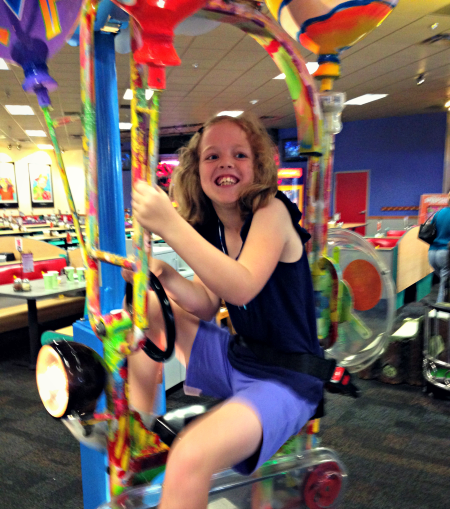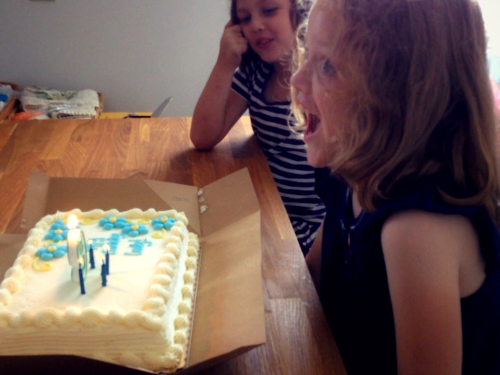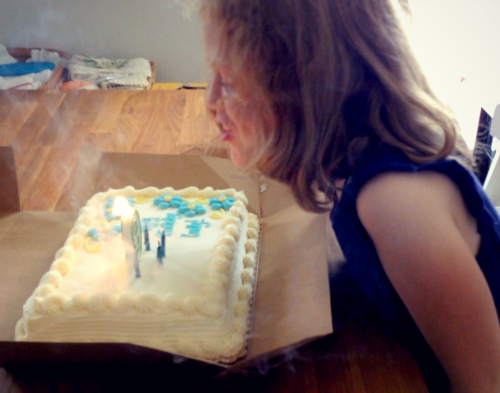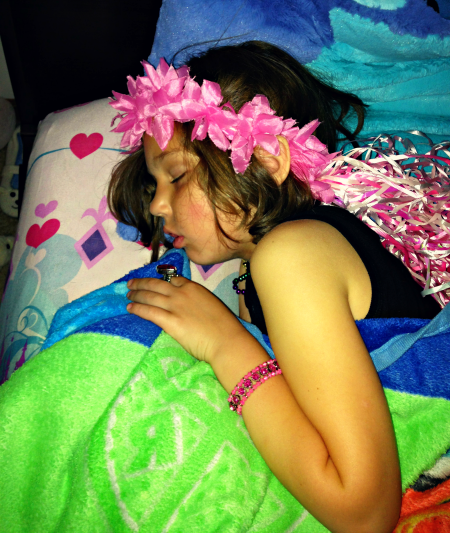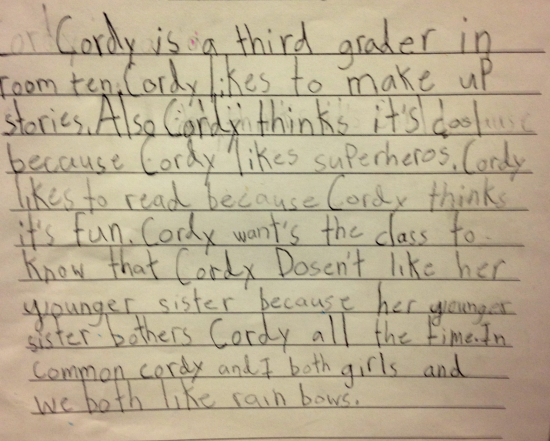The day happened so quickly. I knew it was coming, but I think I kept pushing it from the front of my mind because I didn’t want to admit that my oldest daughter had reached another year older.
But on Saturday, it happened: Cordelia turned nine.
Nine. I’m still feeling disbelief. How could she be that old already? Where has the time gone?
Along with trying to forget that she’s now a year away from double-digit birthdays, we didn’t plan a birthday party. Cordy wavered whenever we asked her about it: sometimes she wanted a big party at a fun location, sometimes she wanted a small gathering at our house, and sometimes she wasn’t sure she wanted anyone around for her birthday.
It didn’t help that a lot of family were going to be busy on Saturday, meaning she’d be disappointed if they weren’t able to be at her party. And we didn’t have a lot of names of other kids to invite. She doesn’t have a lot of friends at school, and the couple of kids she occasionally mentions are kids we’ve never managed to meet.
So the decision was made that instead of spending a lot of money on a party that might possibly be poorly attended and make her feel bad, we’d instead declare it Cordy Day and let her plan out the activities for her immediate family for the day. (Within reason, of course.)
We already had a flaw in the plan when we woke up. It was raining, so Cordy’s scheduled soccer practice was cancelled. However, that gave her more time to play video games in the morning – crisis averted.
Cordy asked to go to Chuck E. Cheese for lunch, so we made our visit to the local mouse. We dined on pizza, played a bunch of games together, and Cordy rode a couple of the kid rides while there.
No official birthday party, so no attention on her, no awkward crown to wear, no one to sing to her, and no pressure to go do the Ticket Blaster (which she’s scared of) or dance with Chuck E. Cheese. She left happy, having traded in her game tickets for a trinket she liked.
After that, we drove back home to enjoy some birthday cake. Per Cordy’s request, no singing Happy Birthday, just candles, telling her happy birthday, and letting her blow the candles out.
The cake was dye-free other than some of the blue decorations on only one half of the cake. Cordy doesn’t want white cake, so the blue flowers were only on the white half, leaving her a chocolate cake that was entirely dye-free.
Once we were all on a sugar high (Aaron’s sugar high coming from gluten-free cupcakes, since he couldn’t eat the cake), we went to the next stop on Cordy’s itinerary: the zoo. The Columbus Zoo has a temporary exhibit called Dinosaur Island and she wanted to ride it one more time before it’s gone, as well as get a stuffed blue dinosaur. We granted both of those requests.
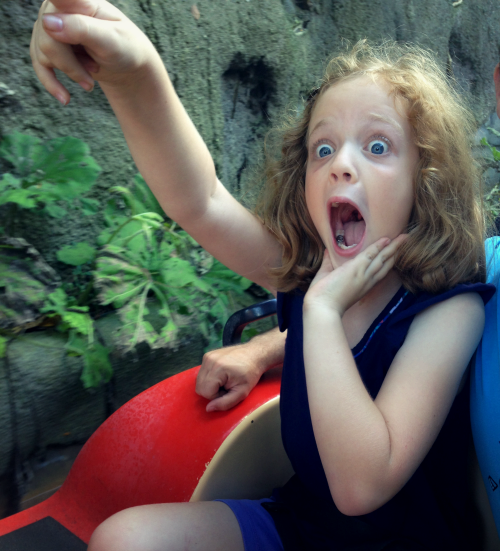 She pretended to look horrified when I pointed the camera at her.
She pretended to look horrified when I pointed the camera at her.
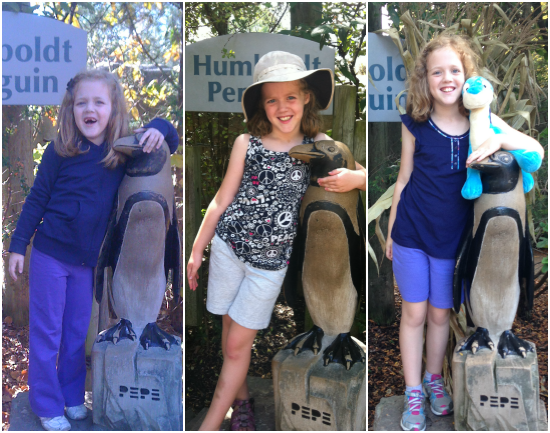 I’ll always agree to take her photo with Pepe if I can keep creating collages like this.
I’ll always agree to take her photo with Pepe if I can keep creating collages like this.
By this point, it was late afternoon. The final agenda item of the day was a trip to Movie Tavern, which if you’re not familiar with it is a movie theater that also serves full meals during the movie. We ate dinner while watching Percy Jackson: Sea of Monsters. Cordy had just finished reading the second book early last week and was excited to see the movie. She got a brownie sundae at the end of the movie because it was her birthday.
After the movie, it was a short drive home with Cordy listening to her favorite songs from my iPhone. She was smiling, content with the flow of the day. She told us again what a great birthday it was as she crawled into bed, hugging her new blue dinosaur tight. It was a fairly low-key day, with no large celebrations or party favors – just a family driving around the city, enjoying a variety of activities.
It was the perfect ninth birthday for Cordy.
